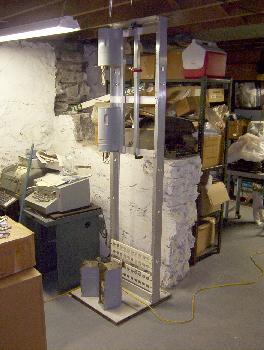 | 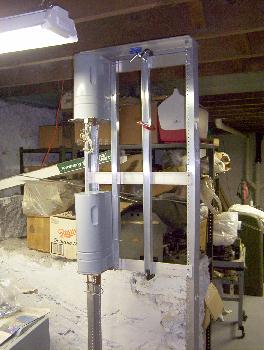 |
| Doug's SxS Switch -- The Early Days |
 |  |
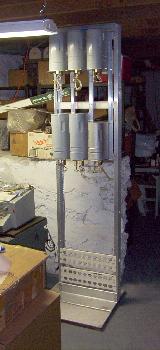 | 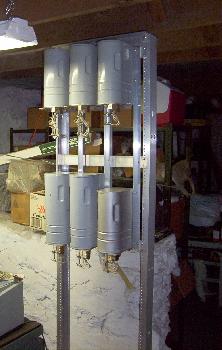 |
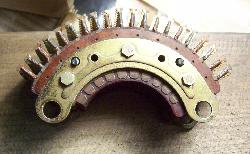 | 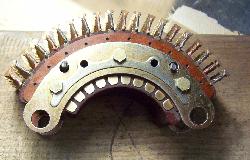 |
 | But the cleaning wasn't just needed for the contacts; the phenolic wafers needed a lot of work, too. There was lots of dirt on the tops and edges, as one might expect, plus oil -- probably from routine maintenance of the banks -- had seeped in between the layers and was a sticky mess. This photo shows two banks completely disassembled and drying after a good dose of Murphy's oil soap. |
| While there is still a lot of work left before they can be actually mounted on the switches, I couldn't resist and bolted two contact banks on the connectors and took a picture. I also adjusted one set of wipers that I could tell even without banks were out of whack. Slowly, it's beginning to look like a complete step switch. |
 |
| 21 January -- Nine levels of the line banks for the connectors are now wired. Rewiring was necessary due to a couple of factors, namely the extent of the dirt & tarnish on the contacts which needed a thorough cleaning, and my connectors are farther apart than the standard phone company spacing. Also, with planning to implement 50 or so lines, it was easier to rewire from scratch than to splice into existing connections. |
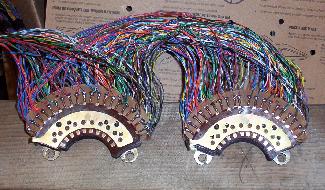 |
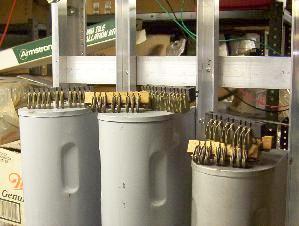 | 26 January -- The shelf/equipment jacks arrived today! I need to start wiring those sleeve banks!! Also, before I mount the equipment jacks I need to move up the lower row of switches. On advice of a fellow ATCA club member far more knowledgeable than I about switches I am told that it really would be best to mount my switch rows closer together. |
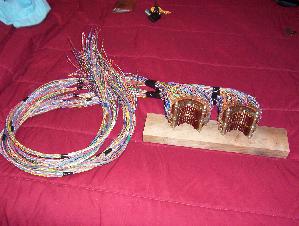 | 1 February - The connector contact banks are done! Here's what they look like with their new cables that will eventually go to terminal blocks on the switch frame. |
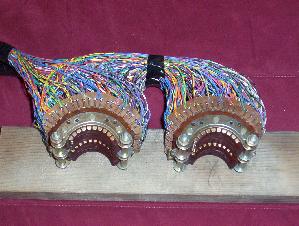 | 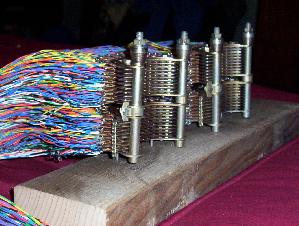 |
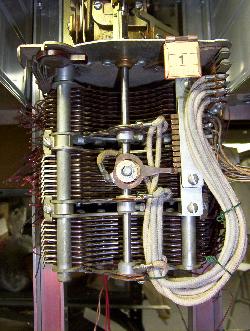 | 2 February -- cut apart the line finder banks that arrived in a string of three. Like the connector and selector banks, these banks need some TLC and the only way to work on them is to separate them. With the banks separated, I decided to put the best of the three on a line finder switch and see if I could make the switch "find" a connection. That led to the first setback of sorts in the project. When the line finder is searching for the station desiring service, it is looking for a resistance path (through the cutoff relay) to battery in order to stop the hunting. It turns out that the surplus 48V relays, around which I designed a printed circuit board for line and cutoff relays, have a coil resistance that is too high for the line finder to "see" when hunting a line. Looks like I am going to have to find the real McCoy and not back engineer my own. I am also very glad that I waited to check this out before I spent big bucks on getting circuit boards made... |
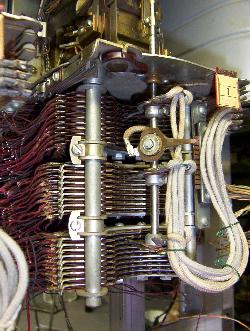 | However, all is not lost! I dug around and found some 2-watt resistors and built up about 800 ohms' worth of resistance and clipped it to a sleeve lead on the line finder bank. I clipped ground to the level commutator that went with the sleeve lead, and grounded the 'start' lead of the finder. Voila! It found the "station"!! Pictured here is the finder resting on terminal 85. This project is beginning to be a LOT of fun! |